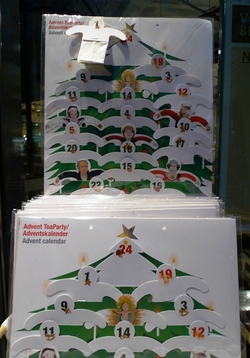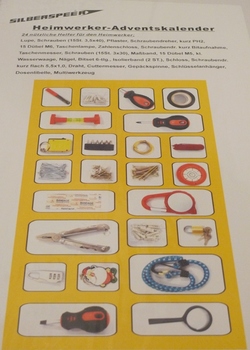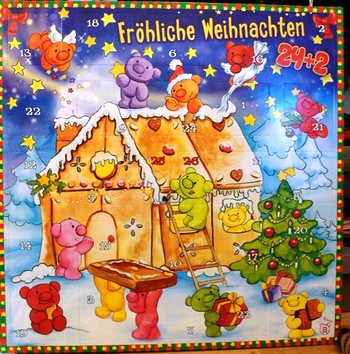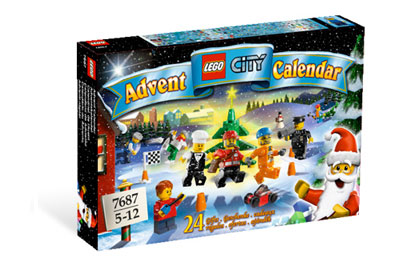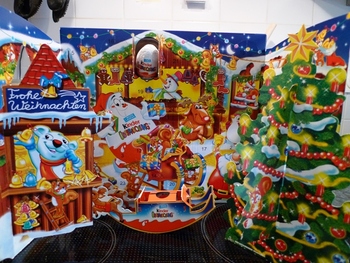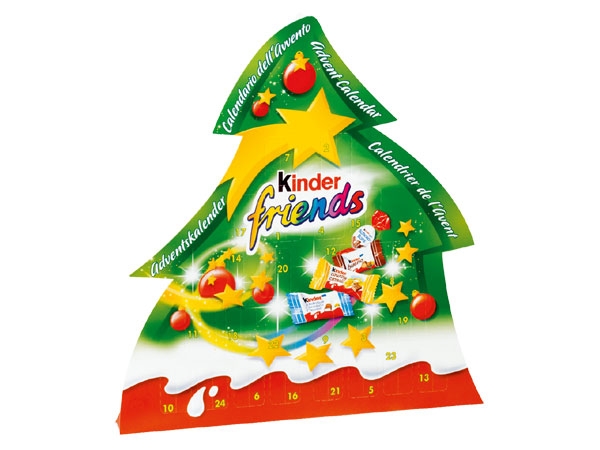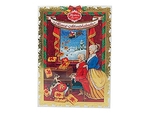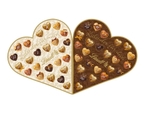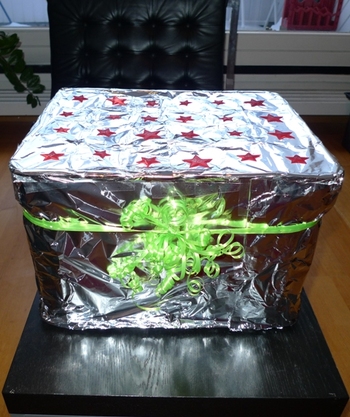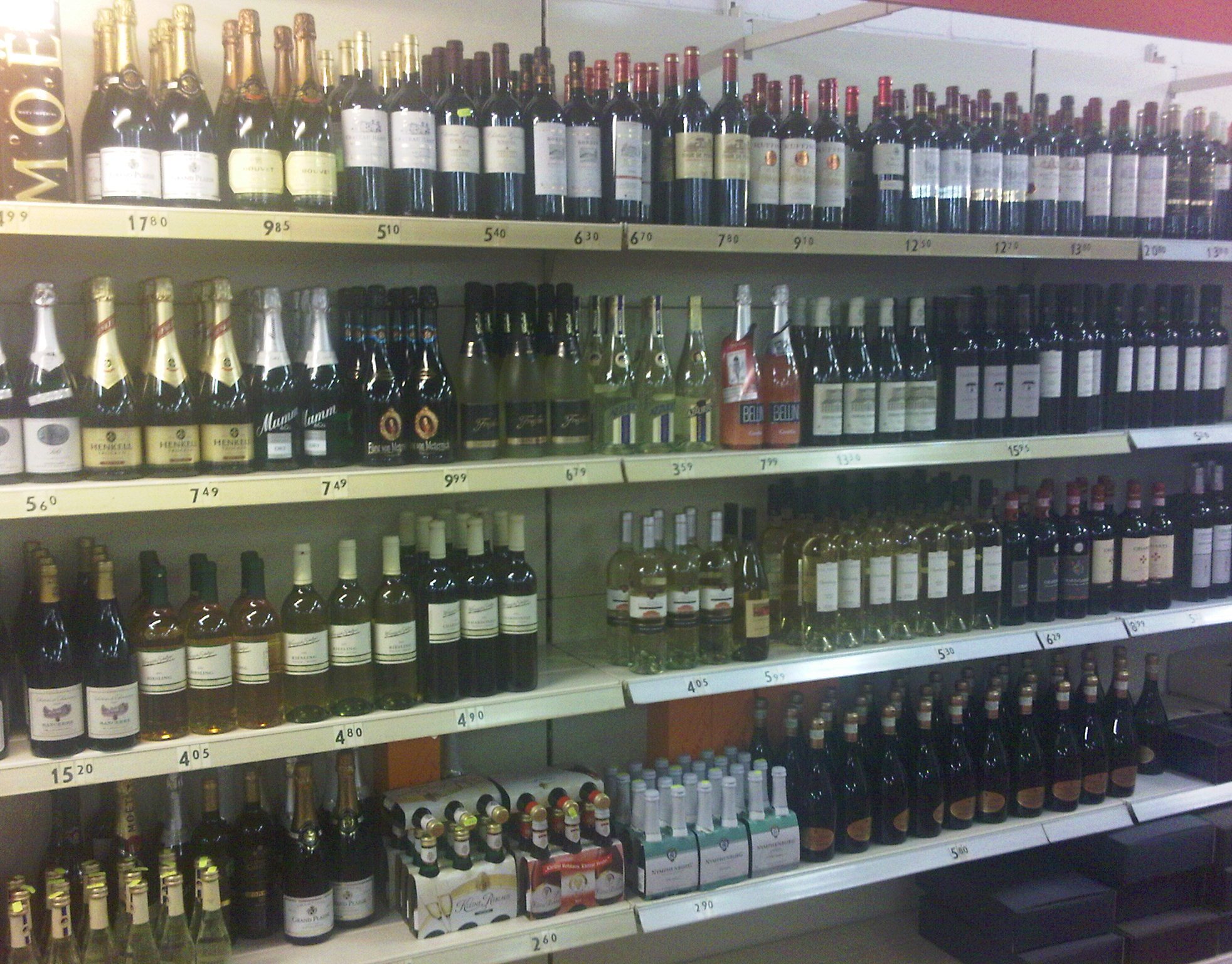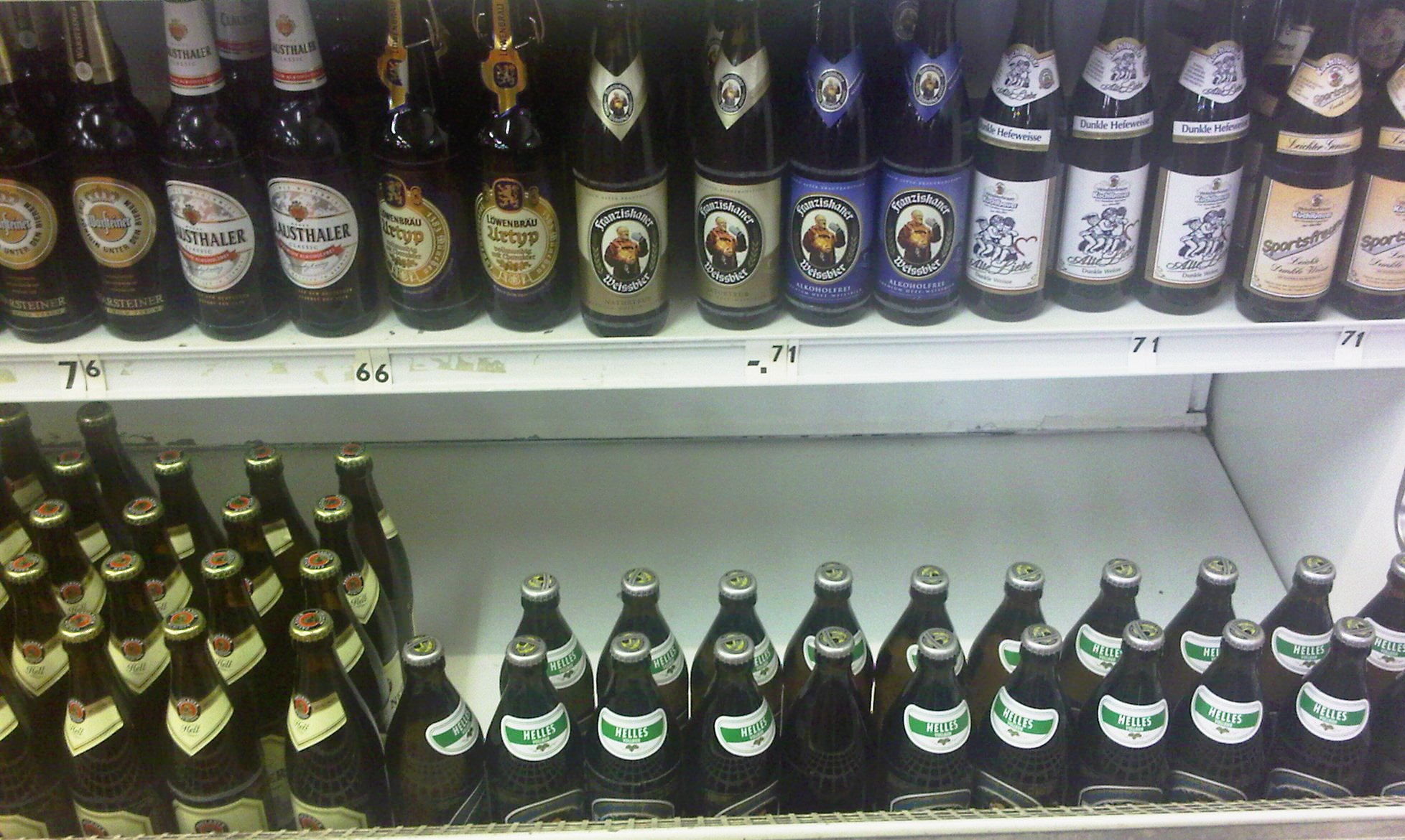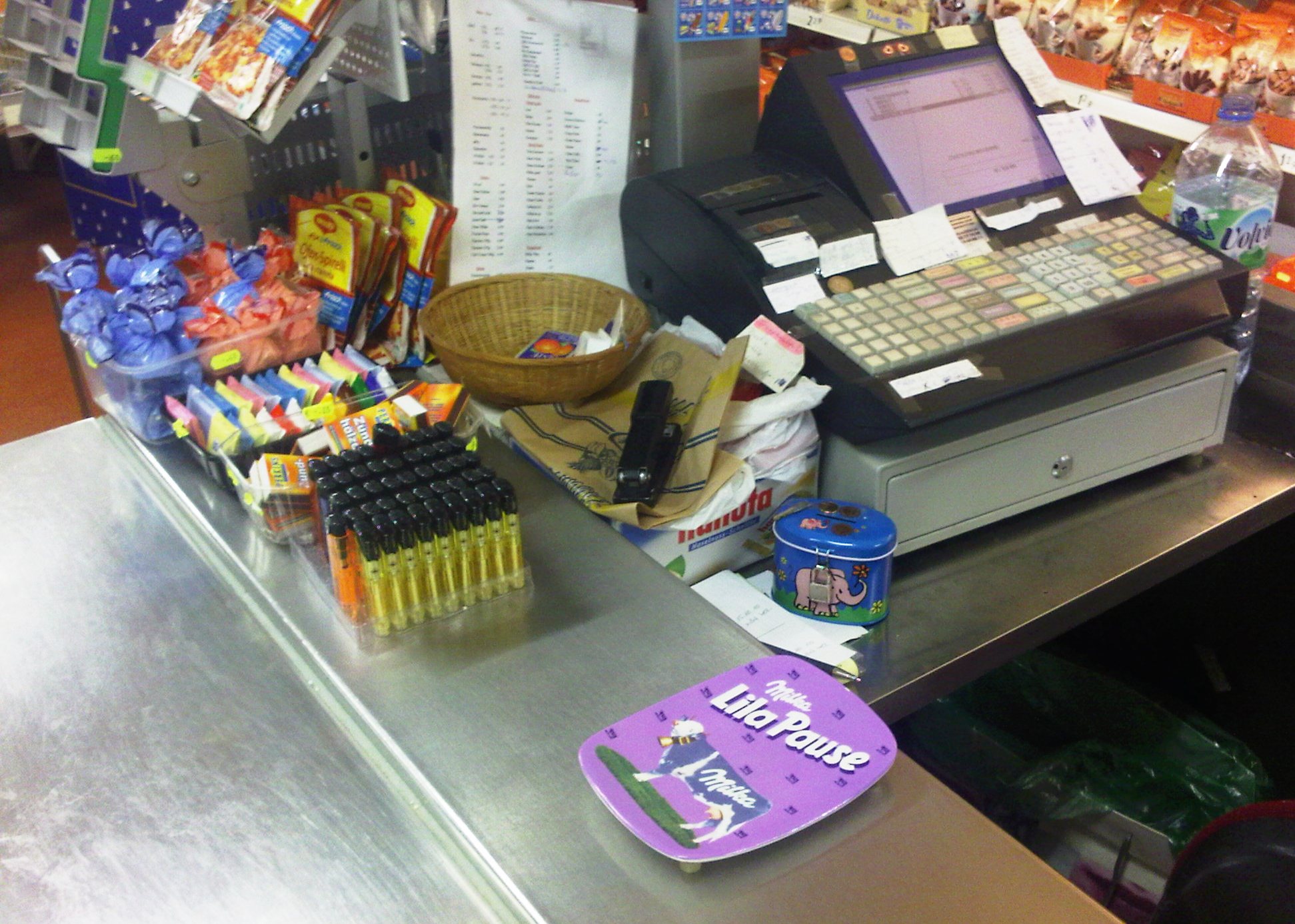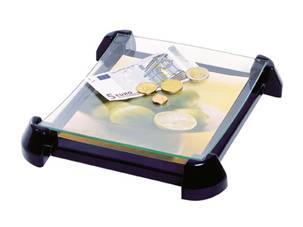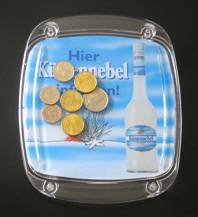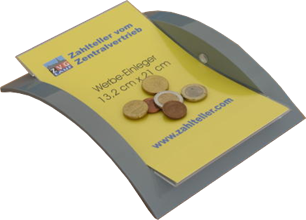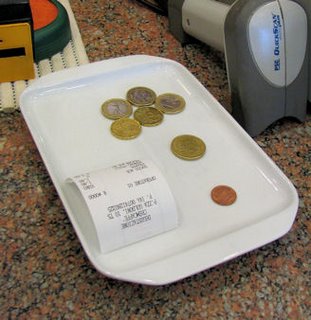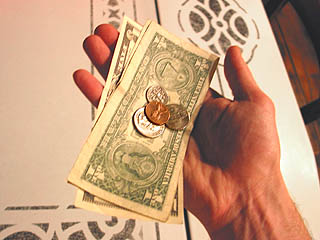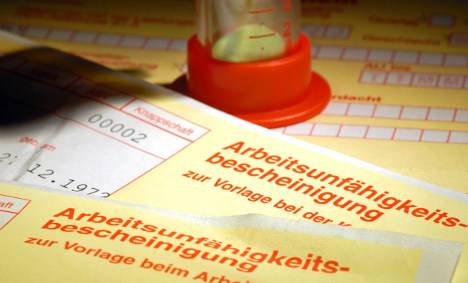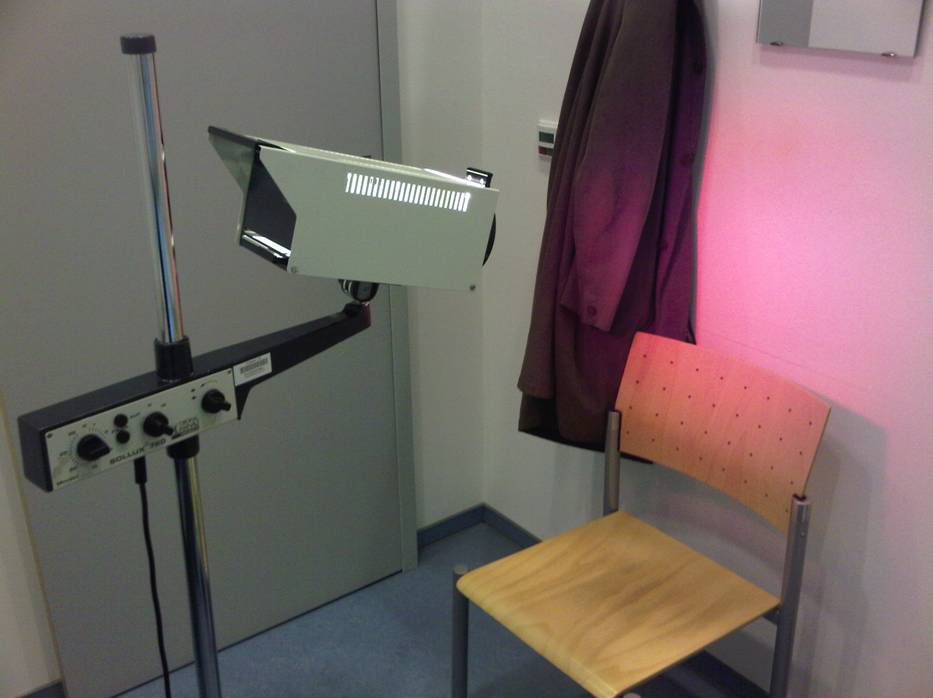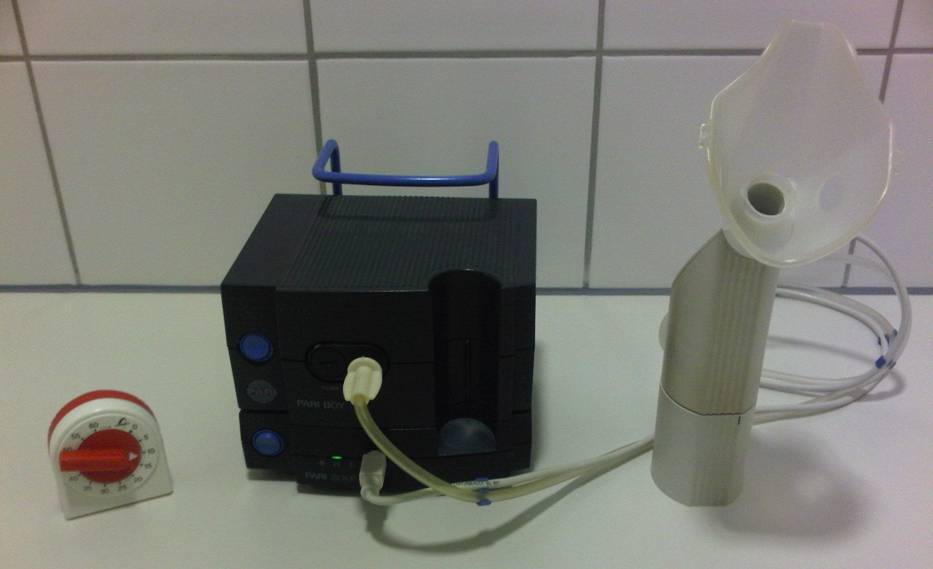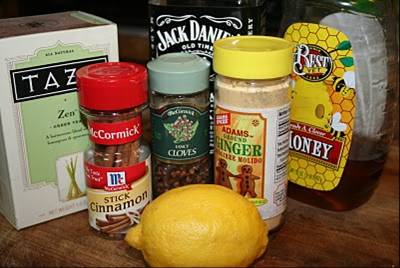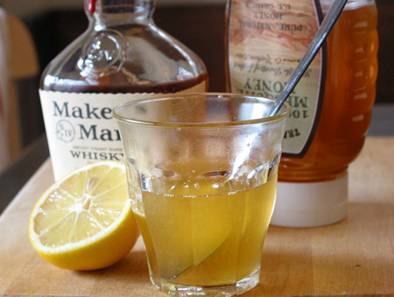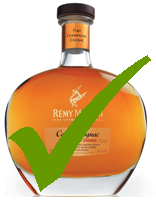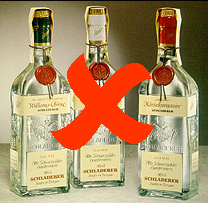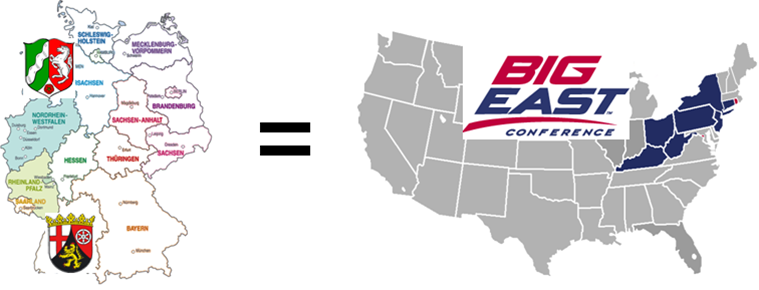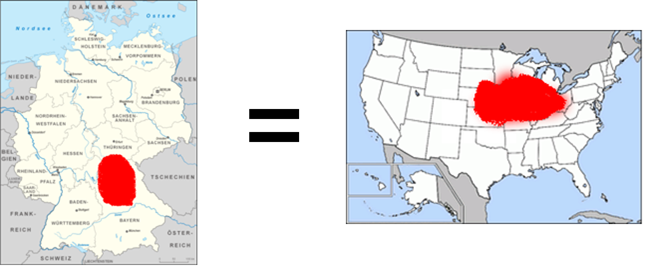As with any experience, after enough repetition you get desensitized. I was reminded of this when Frau A came to visit me at the office, and we went to the cafeteria for lunch. I can stomach most of the items available, but I thought she might starve! I’ve since roasted lobster tail and made her other nice dinners to make up for it…
I am located at a large corporate site: about 20 buildings with their own data center and almost 11,000 people working there. Below is an aerial photo of the campus – it has its own post office and postal code!

There are a lot of mouths to feed, and German efficiency is in full force trying to keep things cheap and fast for the employees (you definitely get a lot for your money here). Also, lunch is very important in Germany as a social event – bringing food from home and eating at your desk is taboo. When the clock reaches 11:59, time to head to the cafeteria, get your plastic tray, and line up!
For institutional food, it’s not too bad. Quality control is strict: they freeze a bit of each item daily and keep it for a month, so that if there is an outbreak of anything they can thaw out the samples and test them to verify what happened (no problems since I’ve been here). Let's see what's on the menu.
The Salad Bar
The first thing you need to know is that in Germany – everywhere, not just my company – the salad bar is quite different. Instead of having lettuce with toppings and other things to mix in, Germans treat salad bar items almost as small side dishes. For example, you will see lettuce, tomato and feta cheese, but not too many other ingredients for an American mixed salad. Instead, you will find: whole boiled eggs, mix of radish and onion, mix of julienne carrots and cucumbers (in a little vinegar), mix of shredded cabbage in vinegar (“kraut”) with onion, and sliced red beets – lots of ‘em. They do not mix these things in with the greens, but load them in a bowl side-by-side and eat each one separately. Same thing in restaurants: salad is often some mix of cabbage, onions, peppers, cucumber, (and often corn!) in oil and vinegar – not a greens/lettuce based mixture with “dry” add-ons and choice of dressing. And don’t forget the beans….white, kidney, chickpeas, various sprouts, etc.
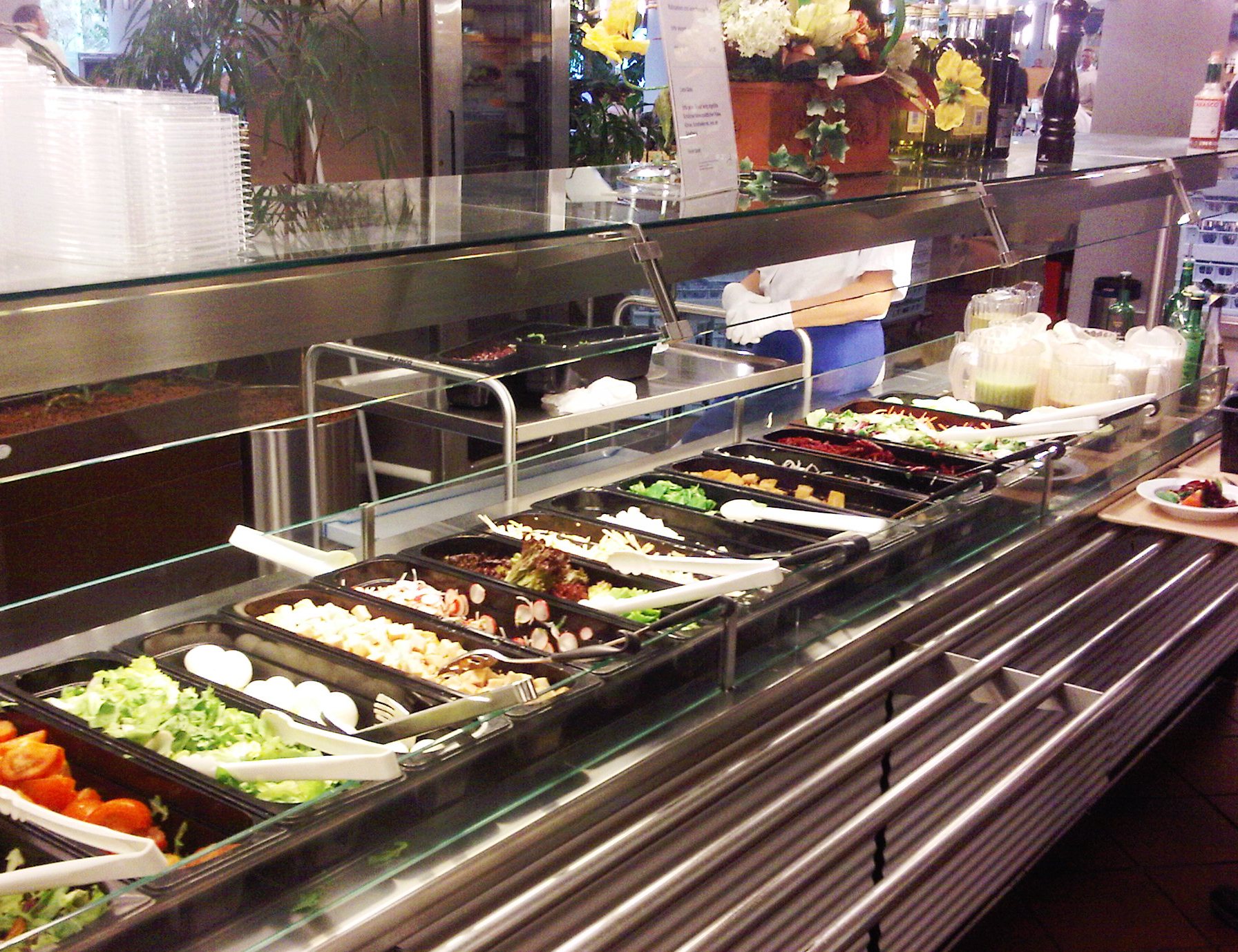
Likewise, the salad dressing station is quite different too. The U.S. will typically have oil & vinegar, Italian, French, and maybe parmesan, raspberry vinaigrette, or blue cheese dressings. Oil and balsamic vinegar are available here, but the Germans have different tastes and definitely like a LOT of dressing. No German salad bar is complete without the “white dressing” in a generic pour container. What is it? I have no idea. Definitely not a creamy Italian or a ranch. I think it usually has yogurt or condensed milk, and uses a German “krauter” (herbs) mix that tends to toward dill and chives (and maybe a little garlic/onion). Frau A hates it – she usually uses a few spoonfuls of the liquid in the feta/bell pepper/cucumber mix, creating a light vinaigrette. You’ll see in the photo below that there are five variations on that theme in the cafeteria, all in large pitchers to make sure you can drown everything in sight. Oil & vinegar are on the right, and there is one vinaigrette pitcher in the front, all by itself…
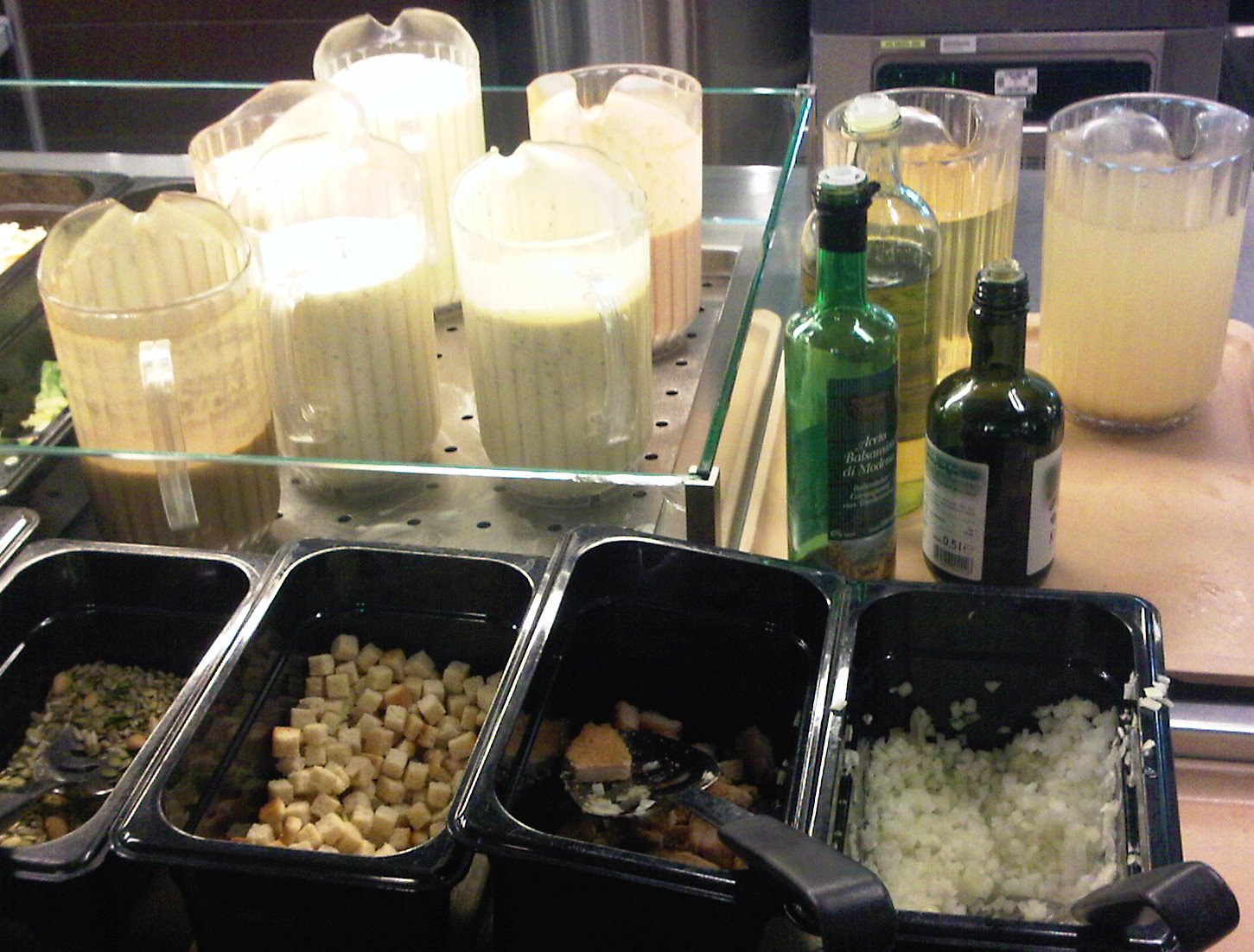
There are some croutons today, but they are rare and have no herbs/spices, just plain bread. Too bad, because good croutons can hide so many sins…
Speaking of bread, you knew this was coming: pretzels are available every day. The German rolls (called “semmel” in Bavaria) are also standard. Pretzels and rolls are located at the soup station. There is usually one soup, almost always some cream-based vegetable soup with a very mild flavor. But there is a distinctly German seasoning sauce called simply by its brand, Maggi. It is a generic flavoring almost like soy sauce (but using other hydrolyzed vegetables) that is frequently added to anything to give some kick.
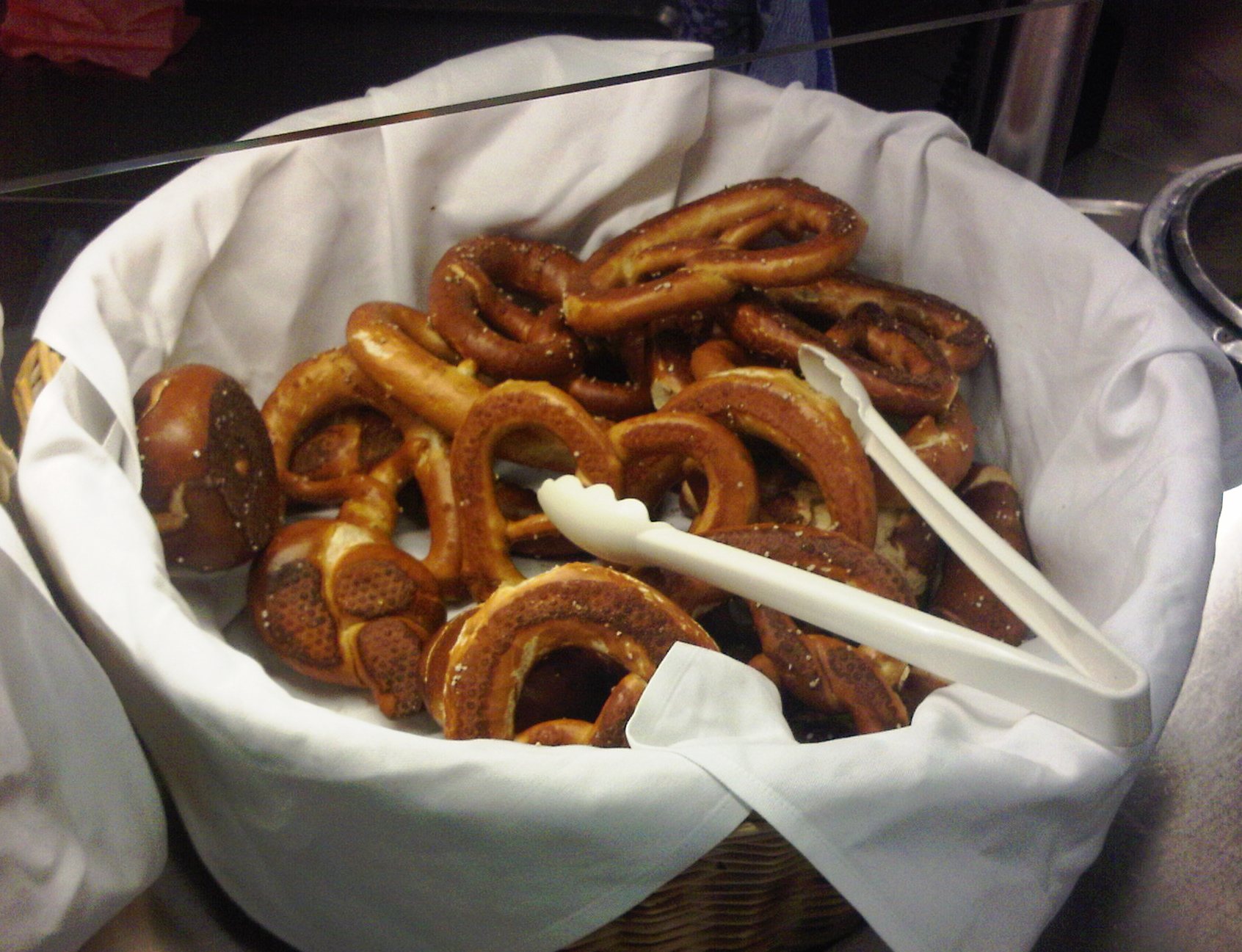
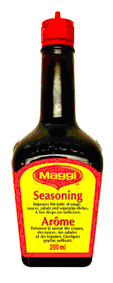
The Main Course
The cafeteria has a typical mix of entrees: Always a German pork dish and varying alternative dishes (e.g. Turkish döner, Italian pastas, or Chinese stir-fry). They usually have a pizza of the day (flammkuchen on Fridays – awesome!) and get crazy at times with theme weeks, such as “Mediterranean Week”. Side dishes include daily variations on rice and potatoes of course (there usually are several potato options!), with the most common vegetables being carrots, cucumbers, and cauliflower. Warning: whether it’s for an entrée or a side, Germans take a LOT of sauce. No kidding, they put it on your plate with a big soup ladle! For pasta that might be expected, but they use this for tzatziki, jus, or anything else with low viscosity. Your know your schweinebraten will be swimming!
At times the cafeteria manager must know some of the main dishes will not be too popular, and sets up a “wurst” option – and there is always a huge line. Who doesn’t want a nice bratwurst with mashed potatoes or fries? And the Bavarian brats are a foot long!
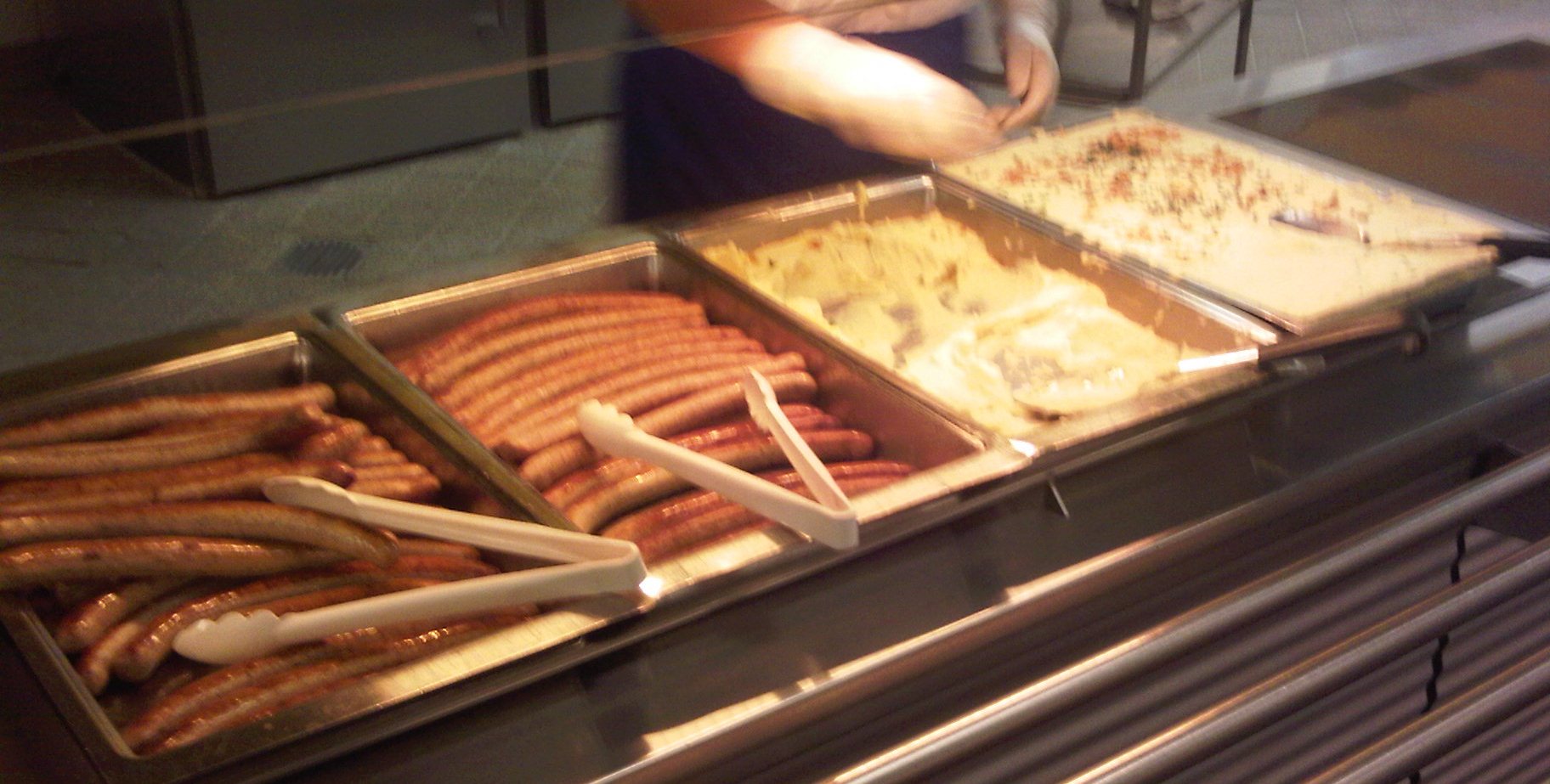
Dessert
This topic overall deserves its own post, because German desserts are probably underrated as a whole. Unfortunately, the same doesn’t hold true for the mass-production cafeteria versions. There is always fresh fruit available (Germans really eat healthy in this regard), but the bulk of the options here are puddings/yogurts, of the German “quark” which is actually cheese but tastes like yogurt. In the first example they offered quark, “griess pudding” (semolina-based, kind of like cream-of-wheat pudding), a couple fruit yogurts, hazelnut/vanilla/chocolate pudding, plus more that I didn’t write down!
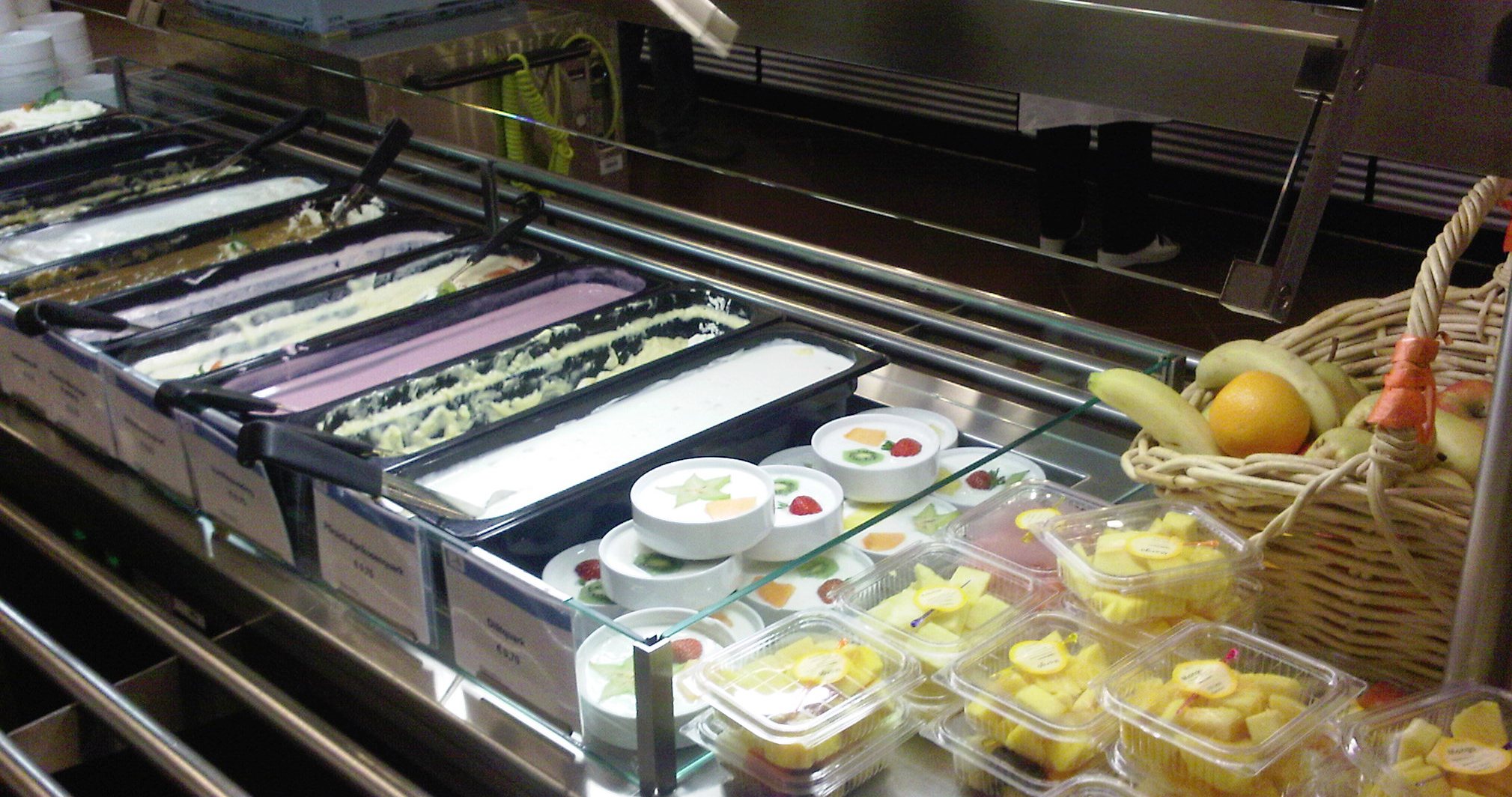
In the second example they changed from long & narrow tubs to bowls, and offered plain yogurt with fruit, griess pudding again, strawberry pudding, caramel pudding, and cherry quark. Notice a trend here? Lots of sauce on entrees, liquid desserts… and I can tell you they are experts at filling those white bowls to the absolute top.

The cafeteria sometimes has slices of fruit cakes or torts, and I always jump on the “bienenstich” (literally, “bee sting”) when they make it. I think this would be a hit in the U.S…. two layers of a light cake with honeyed almonds on top and a layer of vanilla custard/whipped cream in between (pic courtesy of Wikipedia). Maybe Frau A can find a recipe…
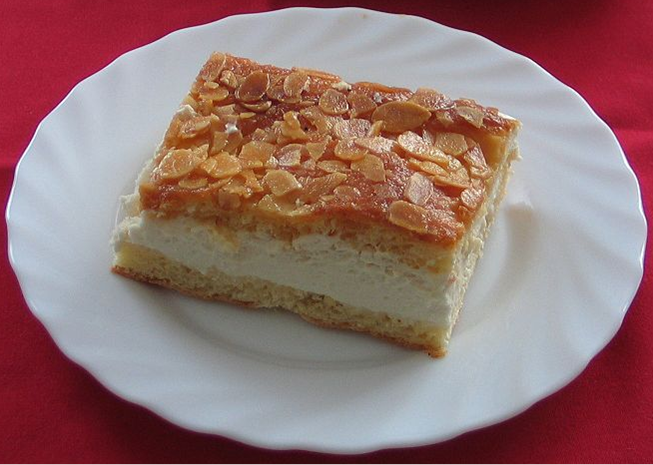
In the summer things get even better, because they open a small Mövenpick ice cream stand! The lesson, as always: don’t schedule an important meeting after lunch.
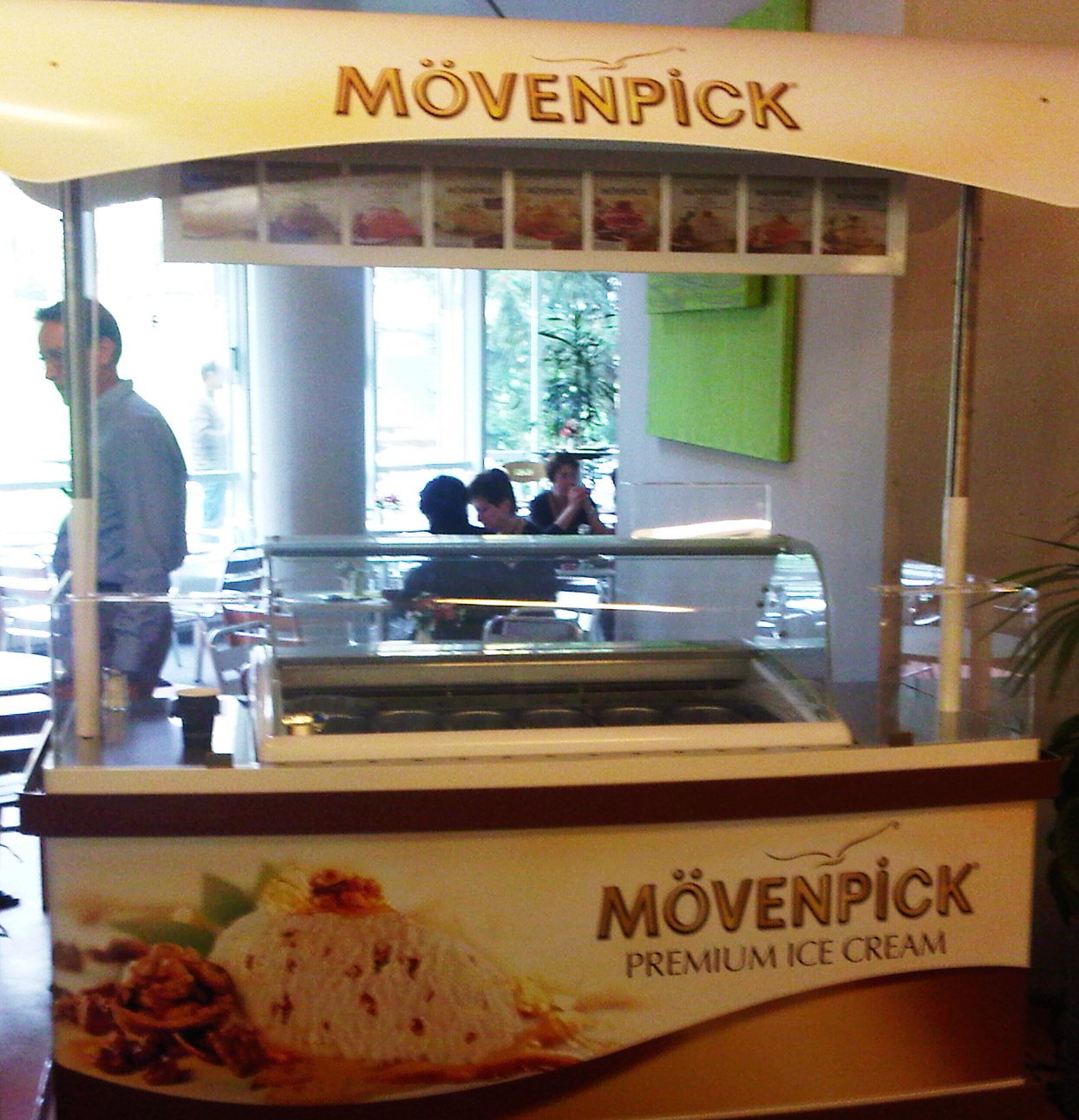
Beverages
What to wash it down with? No, there is no beer served. However, they do have fresh fruit and vegetable smoothies made daily with cool names like Orient Express, Hawaii Cocktail, and Vitamin Power! In addition to the requisite water/juice/soda, Germans will self mix a “spezi” which is Coke and Fanta, or buy the bottled equivalent from Coca-Cola called Mezzo Mix (Coke with Orange flavor). Not to my taste but popular with the younger crowd.
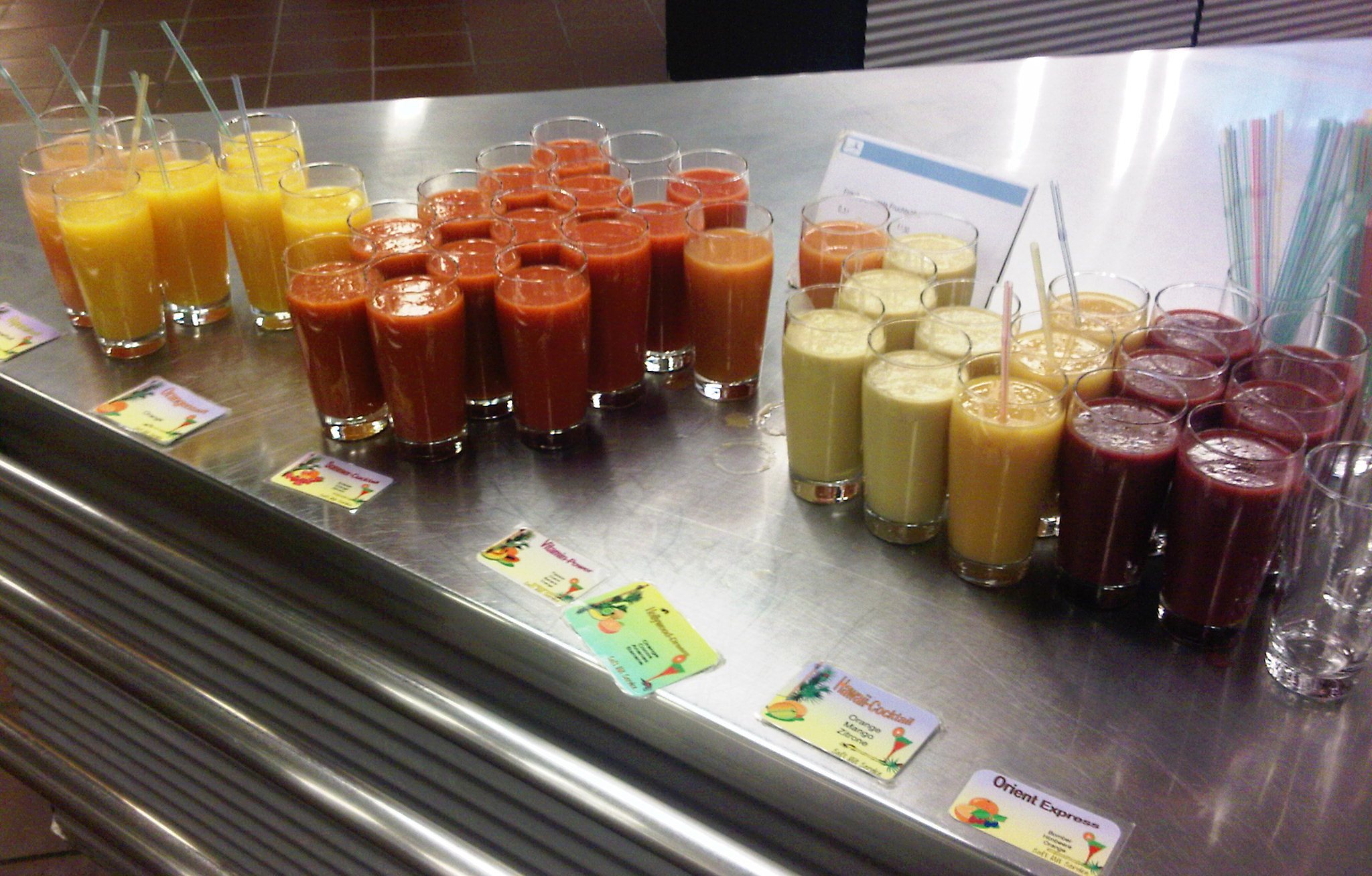

If you want beer or the trendy Bionade (non-alcoholic drink brewed/fermented with the approach as beer), you have to go to the coffee shop next door (off campus) or to the small 7-11 style store on site. There are two coffee bars on campus offering Segafredo espresso drinks that are incredibly crowded between 12 and 1, and a great place to have an informal afternoon meeting if you have a small group.
Look for more German food posts coming up. Frau A loves schnitzel and that deserves a thread, plus the amazing diversity of German breads. Until then, if you’re ever in Munich, let me know – stop by and you can experience my corporate cafeteria for yourself. Guten appétit.
 Friday, December 3, 2010 at 8:00
Friday, December 3, 2010 at 8:00  BB ...
BB ...  Post a Comment
Post a Comment  Germany & German Culture,
Germany & German Culture,  Schnitzelbahn Guest Bloggers tagged
Schnitzelbahn Guest Bloggers tagged  Germany,
Germany,  life in Germany ...
life in Germany ...  Print Article
Print Article  Email Article
Email Article 



